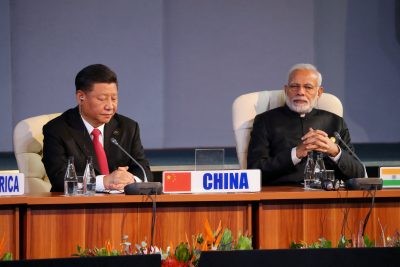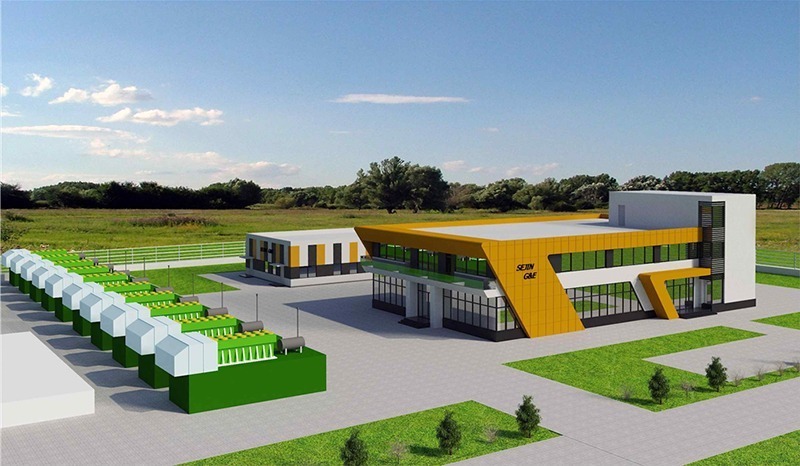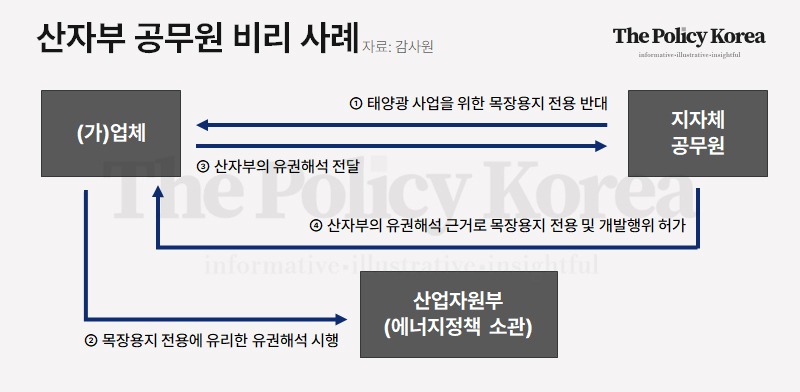[동아시아포럼] 인도, 중국의 일대일로 계획에 정면 도전
남아시아 국경까지 확대된 중국의 계략 위기감 느낀 인도, 일대일로에 전격 대응 경제 성장률, 다국적 연대로 ‘반(反) 일대일로’ 계획
[동아시아포럼]은 EAST ASIA FORUM에서 전하는 동아시아 정책 동향을 담았습니다. EAST ASIA FORUM은 오스트레일리아 국립대학교(Australia National University) 크로퍼드 공공정책 학교(Crawford School of Public Policy) 산하의 공공정책과 관련된 정치, 경제, 비즈니스, 법률, 안보, 국제관계 및 사회에 대한 연구·분석 플랫폼입니다.
저희 폴리시코리아(The Policy Korea)와 영어 원문 공개 조건으로 콘텐츠 제휴가 진행 중입니다.
중국의 일대일로 이니셔티브(Belt and Road Initiative·이하 일대일로)에 인도가 경제적 대항에 나섰다. 일대일로를 통한 도로·항만 개발이 대부분의 남아시아 국경에 도달함에 따라 역내 지정학적 영향력 축소에 위기감을 느낀 인도가 반박에 나선 것이다. 기록적인 경제 성장을 거듭하고 있는 인도는 국제 공조를 통해 남아시아를 넘어 인도 태평양으로 지정학적 영향력을 확장하고 있다.

인프라 개발이란 탈을 쓴 트로이 목마 ‘일대일로’
중국 시진핑 주석은 2013년 일대일로를 발표하며 글로벌 영향력 확장에 나섰다. 일대일로란 중앙아시아로의 진출을 추진하는 육상벨트인 ‘실크로드 경제벨트’와 바닷길을 개발해 동남아시아 등으로의 진출을 모색하는 ’21세기 해상 실크로드’를 합친 개념으로, 유럽·아프리카·동남아 등 70여 개국에 도로, 철도, 송유관, 발전소 등을 건설해 중국의 영향력을 극대화하려는 전략이 담겨있다. 현재 일대일로 참여국은 개발도상국을 중심으로 140개국에 달하며 내륙 3개, 해상 2개 등 총 5개의 노선으로 추진되고 있다. 자칫 경제 원조 형태로 볼 수 있지만 막대한 차관과 인프라를 담보로 경제적 종속을 유도하는 일종의 경제 식민지 전략이란 평가가 지배적이다.
중국과 인도가 대립하고 있는 남아시아는 세계에서 경제, 문화적으로 가장 통합이 덜 된 지역 중 하나다. 복잡한 인종, 종교, 정치 그리고 지형적 특성은 국가 간 연결 인프라 개발을 저해시켰다. 경제적으로 낙후된 만큼 인프라 개발 투자금도 큰 걸림돌이다. 그간 중국은 일대일로란 이름으로 막대한 자금을 남아시아 인프라 투자 공백에 투입했다. 스리랑카의 함반토타 항구와 항구 도시 콜롬보, 히말라야 횡단 회랑, 중국-파키스탄 경제 회랑 등 주요 지역 교통 인프라 개선에 착수한 것이 대표적이다. 이어 아프가니스탄 석유 채굴 계약 체결, 말레이시아 간 자유무역협정 체결 등 적극적인 국제 협약에 나서며 역내 경제 영향력 확장에 나서고 있다.
인도가 처음부터 일대일로에 반발한 것은 아니다. 2014년 중국이 아시아인프라투자은행(AIIB) 발족 제안 후 협력을 요청했을 당시 인도는 긍정적으로 화답하며 AIIB 지원을 확대하고 두 번째 대주주로 참여한 바 있다. 추가로 중국이 인도 내 중국 기업을 위한 산업 지구 개발을 제안했을 때도 민관 협력 인프라 프로젝트를 추가 제안하며 경제적 협력 관계를 이어온 바 있다.
하지만 일대일로 계획에 정치적 목적이 드러나자, 인도의 태도가 돌변했다. 시작은 중국이 일대일로 원조에 불평등한 조건을 걸어 투자 유치국에 경제적 종속을 강요한 것에서 출발했다. 그도 그럴 것이 일대일로로 건설된 인프라는 유치국에 중국 제품을 수출하고, 다시 중국으로 원재료를 수입하는 통로로 사용됐다. 또한 일대일로 불평등 조약은 유치국의 경제적 자립도를 차츰 붕괴시켰다. 이뿐만 아니라 일대일로 인프라가 역내 에너지, 식량 안보 측면에서 전진 기지 역할을 수행하며 향후 중국의 군사적 목적으로 사용될 수 있다는 우려도 크게 작용했다.
인도가 반기를 들게 된 결정적 트리거는 파키스탄의 과다르항에서 신장의 카스까지 2,800㎞ 구간에 도로·철도·가스송유관을 건설하는 ‘중국·파키스탄 경제 회랑(CPEC)’으로, 프로젝트 대상 지역이 인도, 파키스탄의 영유권 분쟁 지역이기 때문이다. 이미 중국은 인도-중국 간 실질적 국경선인 실효 통제선을 따라 고속도로와 마을을 건설하며 인도의 신경을 자극한 바 있다. 인도의 반발에도 중국이 파키스탄 경제 회랑 프로젝트에 570억 달러(약 75조7,188억원)의 투자를 강행하자 인도는 당해년 개최된 중국 일대일로포럼(BRF)에 불참하며 즉각적 대응에 나서기도 했다.
돌변한 인도, 일대일로 대응 프로젝트 진행
이후 인도는 빠른 속도로 일대일로 대항 계획 수립에 나섰다. 파키스탄 경제 회랑 건설 사례를 통해 중국의 일대일로 계획이 인도 남아시아 전략 입지를 축소한다고 판단했기 때문이다. BRF 불참 당월 인도는 아시아-아프리카 성장 회람(AAGG) 비전 문서를 공개하며 즉각적인 대응안을 내놨다. 이어 이란 정부와 국제 협약을 체결해 이란 찬다하르항 개발에 5억 달러(약 6,650억원)를 투자했다. 파키스탄 과다르항을 우회하기 위해 본격적인 해상 인프라 구축에 나선 것이다. 최근엔 국가 부도 위기를 겪은 스리랑카에 약 40억 달러(약 5조3,200억원)를 제공하는 등 본격적인 경제 원조에 나서며 외교적 노력을 수반하고 있다.
전문가들은 예상보다 높은 인도의 자금 지원력에 반색하는 분위기다. 인도는 몇십억 달러 규모의 자본 지원력으로 인도의 경제력을 세계에 증명했다. 인도의 전폭적인 지원은 중국의 착취에 지친 남아시아 지역에도 반향을 이끌어 냈다. 일대일로에 참여 후 경제적 몰락을 겪은 파키스탄과 스리랑카의 사례를 직접 목격했기 때문이다. 각국 정부 역시 남아시아 지역 개발은 분명히 필요하지만, 그 대가가 경제적 종속이 돼선 안 된다며 중국의 일대일로 사업에 우려를 표했다.
현재 인도는 남아시아의 지정학적 영향력 확보와 역내 안정화를 모색하며 중국의 일대일로에 대항하는 국가 간 연대를 진행 중이다. 인도의 최우선 연대 파트너로는 미국이 유력하다. 미국은 이미 아시아 전역으로 확대되는 중국 일대일로 계획에 안보적 측면에서 우려를 표한 바 있다. 실질적인 대응도 전개 중이다. 미 국무부 정무차관이 네팔에 방문해 청정에너지, 전기, 소규모 여성 기업 대상으로 향후 5년간 10억 달러(약 1조3,300억원) 이상 규모의 투자 계획을 발표해 경제적 지원을 시작했고, 방글라데시 정부와 군사 정보 보안 협정을 체결해 남아시아 군사적 영향력 확장에도 나섰다.
공통 목적을 가진 인도도 미국의 대응에 화답했다. 지난 9일 인도는 미국, 사우디아라비아, 아랍에미리트, 프랑스, 독일, 이탈리아 등 각국 정상과 함께 인도·중동·유럽 경제회랑(IMEC·India-Middle East-Europe Economic Corridor)을 추진하는 양해각서(MOU)를 체결해 일대일로 대항 사업을 본격화했다. IMEC는 철도, 항만 등 교통 인프라 개발을 넘어 전기, 청정 수소 파이프와 통신 케이블 설치 등 에너지, 통신 안보망까지 구축하는 프로젝트다.
‘반(反) 일대일로’로 글로벌 영향력 확대, 극복 과제는?
현재 인도는 경제적 성장을 기반으로 글로벌 영향력을 확장해야 하는 역사적 기로에 있다. 이를 위해선 경제적 차원의 글로벌 개발 사업 진행과 외교적 차원의 다국적 연대를 수반해야 한다. 전문가들은 경제·외교 분야에서 가치를 증명해야 하는 인도 앞에 반드시 극복해야 할 몇 가지 도전 과제가 있다고 지적한다.
먼저 인도는 상호 국가 간 신뢰를 구축할 수 있는 체계적인 프로젝트를 적시에 제공하기 위해 노력해야 한다. 이미 인도는 인도양 진출 거점으로 삼은 몰디브에 인도 군대를 주둔시켜, 일명 ‘인디아 아웃‘ 운동이 몰디브 전역에서 일어나는 등 거센 현지 반발에 직면한 바 있다. 인도의 두 번째 과제는 소수의 대기업과 정부 차원의 공적 투자자 외에 다양한 민간 영역의 사업자들을 프로젝트에 참여시키는 것이다. 현재 인도는 해외 전략적 인프라 프로젝트에 참여한 인도 기업 지원 목적으로 대상 기업의 금융 지원 정책 만기를 5년 연장하는 등 민간 참여 정책을 펼치고 있지만 여전히 부족하다는 평가가 있다. 소수의 대기업이 아닌 다수 중소기업 참여도 유도해야 내수 경제 활성화는 물론 해외 투자 프로젝트의 경제적 시너지 효과가 확대될 것이다.
아울러 인도 민간 기업에 만연한 비 신뢰적인 문화를 개선해야 한다. 인도 기업의 저품질 제품과 설비 그리고 잦은 납기일 지연은 국제적으로 유명하다. 제품의 투명성과 엄격한 제작·설비 규정 그리고 적시 납품을 정부가 보장해야만 인도가 추진하는 프로젝트에 대한 신뢰를 높이고 프로젝트 비용을 절감할 수 있다. 이 문제를 해결한다면 남아시아 인프라 프로젝트뿐만 아니라 향후 인도의 국가 신뢰도 역시 크게 상승할 것으로 전망된다.
마지막으로 미국과 파트너쉽을 강화해 더 적극적인 연대 활동에 나서야 한다. 현재 인도·미국 양국은 일부 협약을 통해 아프가니스탄의 여성 역량 강화 사업부터 남아시아 국경 간 전력 거래망 개발 사업, 네팔, 부탄 기술 지원 사업 등 다양한 지원 활동을 통해 괄목할 만한 진전을 이뤘다. 허나 남아시아 일부 지역에 한정된 사업이라 중국의 일대일로에 대항하기엔 여전히 부족하다는 지적이 있다. 인도가 향후 글로벌 격전지가 될 인도 태평양 지역으로 지원 영역을 확장해 경제·안보 등 더 넓은 분야에서 미국과 연대해야 하는 이유도 여기에 있다.
인도는 일대일로 대항이랑 공통 의제를 가진 국가들과 협력해 남아시아 지역 영향력 확대에 나서고 있다. 인도가 남아시아를 넘어 인도 태평양까지 글로벌 연대의 주도국이 되기 위해선 경제적 프로젝트와 국제 연대 활동에 보다 전문적인 자세를 갖춰야 할 것이다.
India pushes back against China’s economic influence
As the competition between India and China for influence in South Asia intensifies, foreign investment becomes more important in shaping regional outcomes. This discussion is particularly relevant as China’s Belt and Road Initiative (BRI) continues to expand, reaching the borders of almost every South Asian country. India will need to leverage foreign aid and investments to achieve its goal of becoming a leading player in South Asia.
South Asia remains one of the least integrated regions in the world. Since its announcement in 2013, the BRI has significantly filled this investment vacuum. China has funded the Hambantota port and Port City Colombo in Sri Lanka, the trans-Himalayan corridor and the China–Pakistan Economic Corridor, and sealed an oil extraction deal with Afghanistan and a free trade agreement with Male.
Beijing has also capitalised on the development gap along the Line of Actual Control — the effective border between India and China — by developing villages and a new highway. China’s BRI has created dependency among South Asian countries by attaching conditionality to its aid. This could potentially serve Beijing’s military interests in the future.
This development has spurred India to accelerate its infrastructure projects in the region. Indian policymakers recognise the need to counter BRI projects to safeguard regional stability and prevent further erosion of India’s strategic space.
New Delhi enjoys civilisational and historical linkages rooted in shared culture, norms and tradition. Any developmental vacuum filled by an outside power that disrespects sovereignty will inevitably bite back. The economic crisis in Pakistan and Sri Lanka which embraced the BRI with great gusto is a glaring example. South Asia needs development, but not at the price of pushing the region into dependencies.
To this end, the growing synergy in India–US ties can foster infrastructural growth in the region, especially when Washington is engaging with smaller South Asian states to enhance its Indo-Pacific strategy. During her visit to South Asia, the US Under Secretary of State for Political Affairs announced that the United States would spend more than US$1 billion over the next five years on clean energy, electrification and small women-owned businesses in Nepal.
On the security front, the United States and Bangladesh have passed a draft agreement on the General Security of Military Information Agreement. But this requires Washington to accommodate and work in consonance with India, especially regarding China in South Asia. Managing China’s ambitious rise in India’s immediate neighbourhood where it is seen as bullying and coercing weaker states in the garb of development must be a priority.
India’s ability to provide nearly US$4 billion of aid to Sri Lanka demonstrates its economic regional potential. As India continues to hold a prominent position on the global stage, the world looks to it to take on a larger economic role.
India must combine diplomatic efforts with massive development activities to transition from a balancing player to a leading player in the region. Yet India’s current approach to regional aid and development faces several challenges — including limited resources which restricts its partnerships with other countries.
Another obstacle is the timely delivery of projects, which is essential for building trust and credibility. The political environment in the host country can also affect the implementation of projects. India has faced political opposition in some countries, such as the ‘India Out’ campaign in the Maldives.
Privatisation is becoming the new normal in domestic undertakings and infrastructure projects. India needs to leverage the private sector to enhance its regional and global influence. This can help overcome the project cost by creating a competitive environment and ensuring transparency, strict regulations and timely deliveries.
But Indian companies must be mindful of potential controversies arising from project quality, a lack of understanding of host country policies and geopolitical realities. To mitigate such risks, they should adhere to high ethical standards. Here, the role of the government becomes quintessential. Before initiating projects, companies should disclose enough information to stakeholders. Governments in the countries neighbouring India’s must regularly organise discussions with Indian business communities. This will not only create a positive image of India but also strengthen bilateral ties.
New Delhi should adopt a more inclusive approach to expand the presence of various private players in its neighbourhood instead of limiting it to a few established players. In line with this, the Indian government extended the Concessional Financing Scheme for five years to support Indian entities that bid for strategically important infrastructure projects abroad.
India can leverage its partnership with the United States to give further impetus to its Neighbourhood First policy. New Delhi and Washington have made noteworthy progress in implementing various initiatives — from women’s empowerment in Afghanistan to the South Asia Regional Initiative for Energy Integration for cross-border electricity trade and promoting capacity-building skills in Nepal and Bhutan. Such trilateral initiatives promote economic development and wellbeing, and contribute to a positive narrative for India–US ties in the broader Indo-Pacific region, which is necessary to counter China’s growing influence.
By working with like-minded countries such as the United States, India can be more active in shaping the regional agenda and promoting greater economic integration, connectivity and development.
원문의 저자는 인도 뉴델리 공군군사연구센터(Centre for Air Power Studies)의 라디 탐비(Radhey Tambi) 연구원입니다.



























